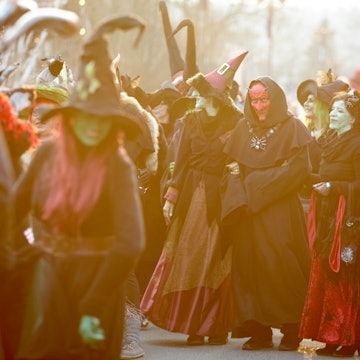
Lacking the geometric precision of gridded streets, the dense sprawl of Tokyo can be mind-blowing to the uninitiated. But the key to breaking down this urban complexity is simply to view the capital as an amalgamation of mini-cities.
Early Morning
A visit to the world's largest fish market at Tsukiji (5-2-1 Tsukiji, Chuo-ku) will awaken all of your senses. More than 2000 tonnes of seafood, worth well over US$15 million, are sold here daily. Watch as fresh tuna is sliced up with samurai-like precision, and then taste a sushi breakfast so fresh it still wriggles in your mouth. But don't delay, as the Tokyo Metropolitan Government plans to relocate the market elsewhere in 2014.
Midday
A huge swathe of reclaimed land floating in the middle of the bay, Odaiba is a futuristic pleasure district for Tokyoites looking for a little retail therapy. It also serves as a physical testament to the heady investment dreams of the Bubble Era.
The headquarters of Fuji TV (2-4-8 Daiba, Minato-ku), an unmistakable ball-shaped structure, is home to one of the city's best observatories. Malls dominate the rest of the landscape, with heaps of big name stores, theme dining and game arcades strewn about.
Public bathing in onsen (hot springs) is a therapeutic Japanese tradition. At Ooedo Onsen Monogatari (2-57 Aomi, Kotoku) steaming hot mineral water is pumped 1400m up from below Tokyo Bay, and channelled into nostalgic Edo-style soaking pools.
Afternoon
Continuing with the theme of Old Edo, head to the historic temple district of Asakusa, which is centred on Senso-ji (2-3-1 Asakusa, Taitoku). The temple enshrines a golden statue of Kannon, the Goddess of Mercy, reportedly fished out of the nearby Sumida River by two fishermen in 628 CE.
A 10-minute walk west lands you on Kappabashi-dori, a wholesale kitchenware and restaurant-supply district. Shop for gourmet accessories, bizarre kitchen gadgets and even the life-like plastic models of food that appear throughout the city.
Evening
Step out of Shibuya Station sometime after dark, and you'll find yourself in the Tokyo of your dreams. At Shibuya Crossing, a mind-blowing spectacle of blazing neon, streets radiate out like a starburst and thronging crowds of shoppers buzz with adolescent exuberance.
This side of Tokyo is also home to the signature landmark of Roppongi Hills (Roppongi 6-chome), with expertly-drawn lines of steel and glass, expansive tree-lined public spaces and a healthy smattering of the city's top restaurants, bars and shops.
An excellent watering hole at the base of the West Tower is Heartland (6-10-1 Roppongi, Minato-ku), which primarily caters to professional expats and internationally-inclined Japanese. Named for the house beer from Kirin, Heartland is simultaneously stylish and easygoing.
Practicalities
Narita Airport (NRT; Narita City) is approximately 65km east of Tokyo, and offers flights to major world cities. Inconvenient location aside, it's an excellent, modern airport with a plethora of services.
Tokyo has thousands of places to sleep, and if expense is not so much an issue, you can choose from a myriad of decadent rooms. The Grand Hyatt Tokyo (6-10-3 Roppongi; Minato-ku) is warmly, gorgeously chic, with smooth mahogany and natural fabrics imparting an organic flavour.
The backdrop for the film Lost in Translation, the Park Hyatt Tokyo (3-7-1-2 Nishi-Shinjuku, Shinjuku-ku) is dignified but relaxed. Staff takes great pride in being gracefully and discreetly attentive.














